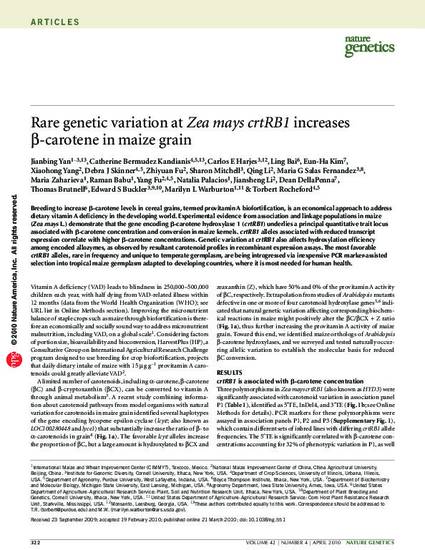
Breeding to increase β-carotene levels in cereal grains, termed provitamin A biofortification, is an economical approach to address dietary vitamin A deficiency in the developing world. Experimental evidence from association and linkage populations in maize (Zea maysL.) demonstrate that the gene encoding β-carotene hydroxylase 1 (crtRB1) underlies a principal quantitative trait locus associated with β-carotene concentration and conversion in maize kernels. crtRB1 alleles associated with reduced transcript expression correlate with higher β-carotene concentrations. Genetic variation at crtRB1 also affects hydroxylation efficiency among encoded allozymes, as observed by resultant carotenoid profiles in recombinant expression assays. The most favorable crtRB1 alleles, rare in frequency and unique to temperate germplasm, are being introgressed via inexpensive PCR marker-assisted selection into tropical maize germplasm adapted to developing countries, where it is most needed for human health.
Available at: http://works.bepress.com/maria-salas-fernandez/12/

This article is published as Yan, Jianbing, Catherine Bermudez Kandianis, Carlos E. Harjes, Ling Bai, Eun-Ha Kim, Xiaohong Yang, Debra J. Skinner et al. "Rare genetic variation at Zea mays crtRB1 increases β-carotene in maize grain." Nature genetics 42, no. 4 (2010): 322. doi: 10.1038/ng.551.